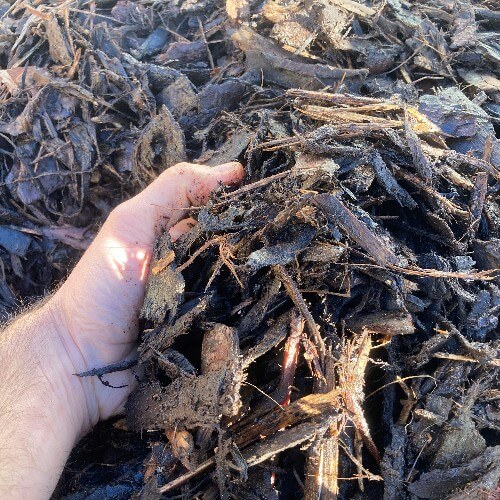- Lawn Turf
- Artificial
- Soil
- Timber
- Composite Decking
- Paving & Stone
Get In Touch With Our Experts Today!
Give us a Call! - Seed & Fertiliser
- Dressing
- Bark

October 27, 2025 BarkBark MulchMulchMulchingPlay Bark
A well-mulched garden not only looks great, but it performs better, too. With healthier soil, fewer weeds, and less maintenance, there are numerous benefits to incorporating mulch into your landscaping. But how exactly do you mulch?
Whether you’re maintaining a small garden or designing a large commercial space, mulching can completely transform and enhance your landscaping. This article will tell you what mulching is, the benefits of it and how to mulch effectively – helping you get the best results from your projects.
Put simply, mulch is an organic material placed over the surface of soil to protect or nourish it. The nutrient-rich content of mulch can help improve the condition of soil, aid water retention and drainage, and protect it from the elements. All of which benefit your plants by feeding them the essentials they need to grow strong, healthy, and vibrant.
Natural mulch is the most common form, which is made of decomposed organic matter. However, there are inorganic types of mulch, such as gravel, decorative stones or bark, which have similar qualities but provide a different look. They also make fantastic ground cover!
Mulching does more than add aesthetic appeal; it actively supports your garden’s health and durability. Some of the key benefits of incorporating mulch in your landscaping include:
A deep layer of mulch helps reduce water evaporation in the summer – keeping your soil and plant roots hydrated, and reducing the need for watering. In winter, mulch can also aid drainage to avoid soil saturation.
Not only does mulch reduce space for weeds to grow, but it can also be used to block sunlight and prevent weeds from germinating – saving you time and effort weeding flower beds.
Organic mulches can boost your soil’s structure, condition and quality. With slow-releasing nutrients, they enrich your soil over time and support plant growth. It’s also a natural, sustainable product with benefits for the ecosystem, too.
As temperatures drop throughout winter, your soil is susceptible to frost. A layer of mulch can keep the chill at bay, ensuring plant roots stay warm, while reducing stress on your plants throughout the seasons.
Ultimately, bark mulch provides a finishing touch to your landscaping – tying together the different areas of your exterior and instantly elevating your garden design. Mulch provides depth, texture, and colour so that you can have a lot of fun with it too!
If you’re looking to make your own mulch, you can easily do so by reusing the organic matter and debris in your own backyard. Here are our top tips for producing your own, sustainable mulch:
Follow our easy four-step guide to mulching:
Mulching is a key part of gardening care, and can be used in almost every part of the garden:
Spring or autumn is the best time of year to apply mulch to your landscaping. During spring, mulch will help lock in moisture and prevent early weed growth. In autumn, mulch can help insulate soil and protect plant roots over winter. By applying mulch twice a year, you have plenty of time to create your own organic mulch if you prefer.
We’re passionate about supplying sustainable materials that enhance landscapes while being kind to the environment. Mulch can achieve just that. Our bark and mulch products are sourced responsibly for our customers and trade accounts. Available in bulk bags or loose loads, we can deliver mulch directly to your site. Just get in touch with our friendly customer service team. For our landscapers, check out our Trade Account for additional support with your landscaping projects.